The reason you are seeing that many entries in the x-axis is because you are reading the csv file with date (or time) content as text. If you try df.info(), you will see the Time column as object.
So, you need to convert the Time column into datetime using pd.to_datetime(). Also, you will need to format the data that will be shown in the X-axis using DateFormatter() and 'set_major_formatter'. The below code has an example code to help you. But, as you have not provided the data that is used for the plot, you may need to refer to the information here to change it to time format, year format, etc. as you it.
df=pd.read_csv('Timetext.csv') #Reading my data
print(df.head())
df['Time'] = pd.to_datetime(df['Time'], format="%d-%m-%Y") # EDIT this based on how your CSV text data is
print(df.info())
plt.rcParams["figure.figsize"] = [7.00, 3.50]
plt.rcParams["figure.autolayout"] = True
columns = ["Time", "SO2_inlet",'SO2_outlet']
plt.plot(df.Time, df.SO2_inlet)
plt.plot(df.Time, df.SO2_outlet)
# Define the date format
from matplotlib.dates import DateFormatter
date_form = DateFormatter("%d-%b-%y") ## Change this to what you want to show in X-axis DATE labels
plt.gca().xaxis.set_major_formatter(date_form)
Output
## MY CSV data ##
Time SO2_inlet SO2_outlet
0 01-01-2022 645 352
1 02-01-2022 104 917
2 03-01-2022 236 630
3 04-01-2022 510 901
4 05-01-2022 781 287
## CSV data changes to datetime64 ##
# Column Non-Null Count Dtype
--- ------ -------------- -----
0 Time 195 non-null datetime64[ns]
1 SO2_inlet 195 non-null int64
2 SO2_outlet 195 non-null int64


